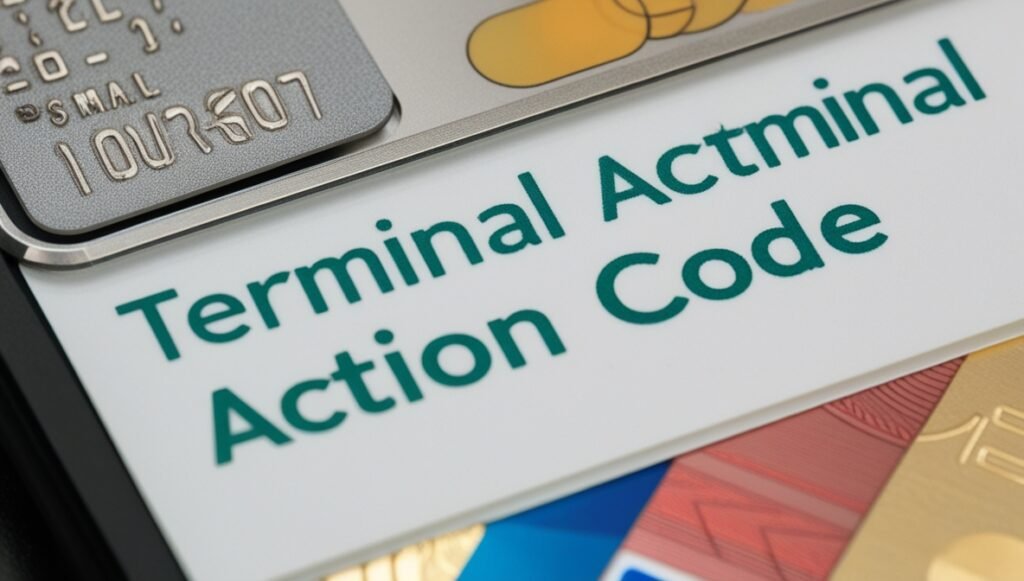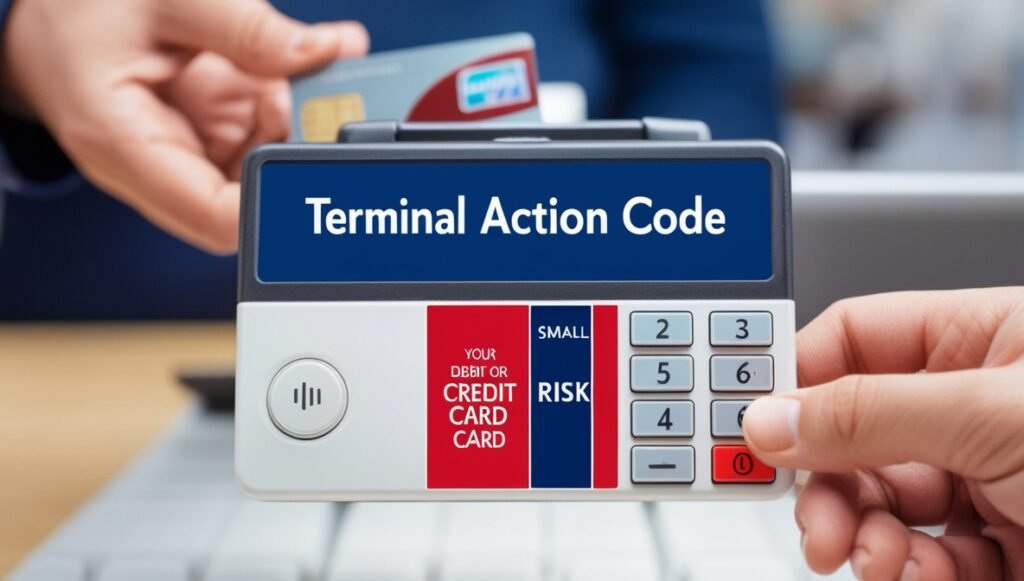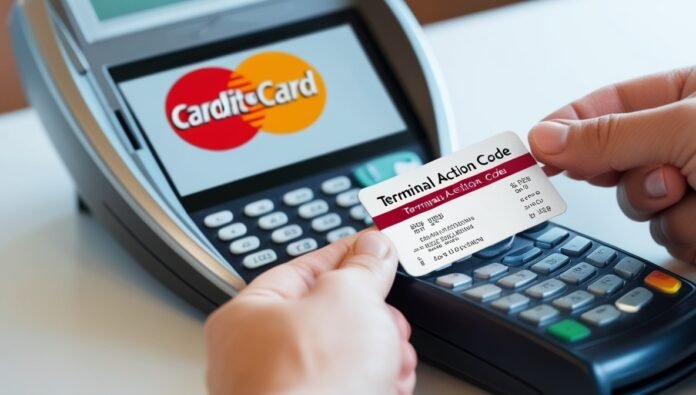Terminal action code is a term many people see but don’t fully understand. Terminal action code is mostly used in payment systems, banking, and card transactions. It plays an important role in telling a payment terminal how to act when something goes wrong in a transaction. For example, if your debit or credit card is not working, or there is a small risk in the transaction, the terminal uses this code to decide what to do next. It is like a set of rules that the machine follows to keep the payment safe and smooth. Without these codes, the system may fail to detect errors, and that could cause problems for both customers and businesses.
In simple words, terminal action code is like an instruction guide for payment machines. It tells the machine whether to accept, reject, or ask for extra checks during a transaction. These codes help reduce fraud, improve security, and make sure payments are handled correctly. Businesses, banks, and even customers benefit from this hidden system working behind the scenes. For example, when you swipe your card, the terminal checks many things at once, and the action code decides the safe step to take. Knowing about terminal action code helps people understand why sometimes their card gets declined or why extra verification is needed. It is not just a technical word; it is a part of daily payments that protects money and trust.
What is Terminal Action Code and Why It Matters?

Terminal action code is an important part of payment systems. Terminal action code is a set of instructions that tell a payment terminal how to react when something happens during a card transaction. For example, if your debit or credit card is used in a store, the terminal checks many things in the background. The action code decides if the payment should go through, be stopped, or need extra checks.
It matters because without it, payments may not be safe. Fraud could happen easily, or errors could go unnoticed. By following these action codes, the system protects money, keeps data secure, and makes sure customers and businesses trust the process.
How Terminal Action Code Works in Payment Systems
When you swipe or insert a card, the payment terminal talks with the bank system. The terminal checks details like the card chip, account status, and security levels. The action code is like a rulebook for the machine. If everything looks fine, the code allows the payment to go ahead.
If something looks risky, the code may tell the terminal to reject the payment or ask for more verification, like entering a PIN. This process happens within seconds, so the customer does not feel the wait. In short, the action code works like a traffic signal—green for go, yellow for wait or check, and red for stop.
Role of Terminal Action Code in Card Transactions
In every card payment, terminal action code plays a hidden but big role. It decides what to do if the system notices something unusual. For example, if a card is expired, the code blocks the transaction. If the card is new but needs a PIN, the code asks for it before allowing the payment.
This role is important for both small and large payments. Whether you are buying a coffee or booking a flight, the terminal action code keeps the payment safe and smooth. It ensures that the bank, the shop, and the customer all follow the right steps.
Types of Terminal Action Code You Should Know

There are different types of action codes, each with its own job. The three main ones are:
- Default Action Code – This is the normal rule set that guides how the terminal works in usual situations.
- Denial Action Code – This code blocks transactions if something looks wrong, like a stolen or expired card.
- Online Action Code – This code tells the terminal to go online and confirm details with the bank for extra security.
Each type is used in different cases to make sure payments are safe and controlled.
Why Terminal Action Code is Important for Security
Fraud and cybercrime are common today. People try to misuse cards or steal information. Terminal action code is one of the shields that stop such risks. By setting rules, it prevents unsafe payments and reduces fraud.
For example, if someone tries to use a card without a PIN in a high-value purchase, the action code stops it. This way, customers stay safe, and businesses avoid losing money. Without terminal action code, security would be much weaker.
How Banks and Businesses Use Terminal Action Code
Banks use terminal action code to make sure their customers’ accounts are safe. They set rules for when payments should be approved, checked, or blocked. Businesses also rely on these codes so they can accept payments without fear of fraud.
For example, a shop might set the terminal to ask for PIN entry for payments above a certain amount. The code ensures this rule is followed every time. This helps both the business and the customer trust the system.
Common Issues Linked to Terminal Action Code
Sometimes, people face issues because of terminal action codes. Some common ones include:
- Card Declines – Even if money is in the account, the code may decline the payment due to security checks.
- Extra Verification – Customers may get asked to enter a PIN or provide ID more often.
- Slow Transactions – If the terminal needs to connect online, it may take a little longer.
These issues may feel frustrating, but they are signs that the system is keeping payments safe.
Terminal Action Code vs Other Security Measures
Terminal action code is one part of a bigger security system. Other measures include encryption, PIN codes, and bank monitoring. While those tools protect data and accounts, the action code controls the actual decision at the payment terminal.
For example, encryption protects card details, but the action code decides if the payment should go ahead. Both work together to make sure every transaction is safe from start to finish.
Real-Life Examples of Terminal Action Code in Action
Imagine you are shopping in a store, and your card is declined. You check your bank balance, and the money is there. What happened? The terminal action code noticed that the card was used in another country earlier that day. It blocked the payment to prevent possible fraud.
Another example is when you buy something expensive, and the terminal asks for your PIN even though small purchases don’t need it. The action code made that decision to add extra safety. These examples show how the codes work silently in the background to protect you.
Conclusion
Most people never think about what happens behind the screen of a payment machine. But understanding terminal action code can help you know why payments sometimes fail or need extra steps. It gives peace of mind to customers, trust to businesses, and safety to banks.
By knowing this, you will see payment systems not as random or confusing but as careful and smart systems designed to protect everyone.
FAQs
Q1: What does terminal action code mean in simple words?
It means a set of rules that tell the payment terminal what to do during a card payment.
Q2: Why does my card sometimes get declined even with enough money?
The terminal action code may block it if it sees a risk, like unusual activity or expired details.
Q3: Are there different types of terminal action code?
Yes, there are default, denial, and online action codes. Each one has a special role in keeping payments safe.


